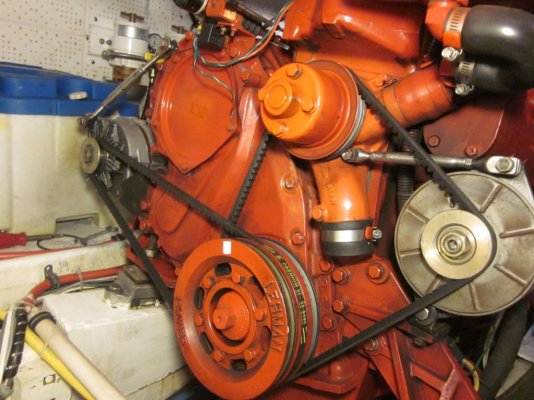Per
Guru
- Joined
- Jan 25, 2011
- Messages
- 622
I installed a new high output (105 amp) HD alternator. The old unit was not putting out so i figured why not spend a little extra and get more amps (thanks FF)
The only real challenge was to transfer the pulley from the old unit, had it done at a shop in the marina.
Now I am wondering if the belt is too loose, seems to move a little up and down when running, any rule of thuimbs of how tight or loose belts should be?
And whats a good method to get a good and tight belt?
The only real challenge was to transfer the pulley from the old unit, had it done at a shop in the marina.
Now I am wondering if the belt is too loose, seems to move a little up and down when running, any rule of thuimbs of how tight or loose belts should be?
And whats a good method to get a good and tight belt?



